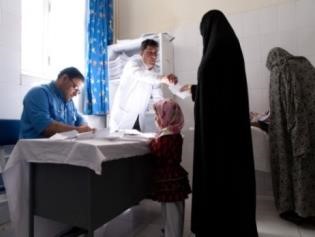 Afghanistan has an estimated population of 26 million growing annually at 2.3%. The country continues to face high infant, children under five and maternal mortality figures. In addition, Afghanistan suffers from the burden of communicable and noncommunicable disease with variations between regions and rural and urban settings. Access to basic healthcare has increased from 8% in 2001 to 57% in 2010. The number of health facilities with at least one female health worker has increased from 45% in 2000 to 74% in 2011. The number of health facilities providing the basic package of health services (BPHS) has increased from 1087 in 2004 to 1784 in 2011.
Afghanistan has an estimated population of 26 million growing annually at 2.3%. The country continues to face high infant, children under five and maternal mortality figures. In addition, Afghanistan suffers from the burden of communicable and noncommunicable disease with variations between regions and rural and urban settings. Access to basic healthcare has increased from 8% in 2001 to 57% in 2010. The number of health facilities with at least one female health worker has increased from 45% in 2000 to 74% in 2011. The number of health facilities providing the basic package of health services (BPHS) has increased from 1087 in 2004 to 1784 in 2011.
The country is still under critical shortage of human resources for health (HRH) and is currently below the WHO benchmark of 2.3 doctors, nurses and midwives per 1,000 people. Health care personnel is characterized by imbalances in skill levels, inequitable HRH distribution, low HRH production capacity compared with health system needs and population demands. There is also an absence of training of certain health specialties, for instance in medical engineering, medical technology, nutrition and environmental health, weak capacity for HRH management both at the national and provincial levels, lack of clear continuous professional development strategy and career pathway mechanisms, weak governance and poor regulation over the private sector in addition to low government investment on HRH training and production.
WHO supports the Ministry Public Health through:
- Developing and implementing the National Human Resources for Health strategy 2015-2020 and a 10-year Action Plan
- Developing a 5-year strategic plan for Ghazanfar Institute for Health Science
- Establishing a multi-sectorial Human Resources for Health (HRH) forum
- Developing the Medical Council framework and Medical Act
- Decentralizing the Human Resource Management Information System (HRMIS) into 18 provinces and training focal points


